
I am a Northern Cheyenne contemporary visual artists and muralist. I love to alternate areas of organic movement with linear ribbons and patterns of richly variegated hues representing my Native American heritage. I work spontaneously, constructing motifs directly on the canvases and walls while emphasizing the tangible aspects of mixed media through innumerable applications of opaque and transparent color. With color and imagery as a metaphor, I explore a spiritual realm, eliciting feelings, associations, and meanings that allude to a concrete, visible reality. Ultimately, it is this meditative content and its emotional timbre that lies at the heart of my work.
My art is to be experienced. Life is the experience of imagining, daring, creating, following tangents, and creating again. It is my hope that the final pieces allow the viewer’s imagination to wander through my story, their journey, and settle in the space of contemplation and connection. So much of the human experience is unique but at the same time so much of it is to be shared.
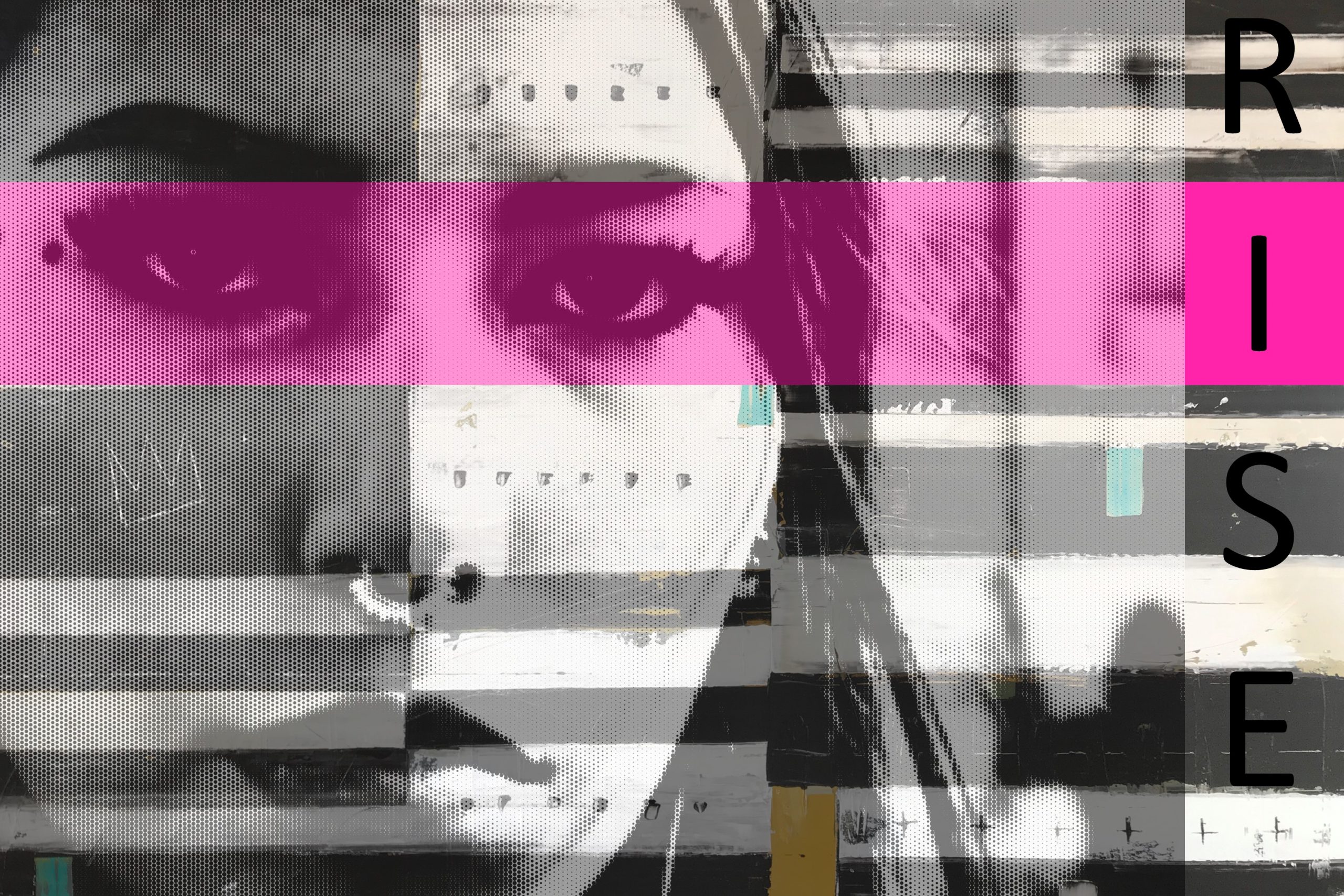
RISE is a mixed media portrait of Quannah Chasing Horse Potts, who is Gwich’in and Lakota. The 17 year old climate change activist introduced a resolution on climate change during the 2019 Alaska Federation of Natives (AFN) gathering. The resolution they brought to the floor calls on AFN to declare a state of emergency on climate change and to set up a climate change task force to develop climate policies. The resolution states that Alaska is warming at twice the rate of other parts of the world. Natives are experiencing extreme weather events, melting permafrost, flooding and erosion, which are resulting in the relocation of entire communities along with devastating the natural habitats of our animal and plant relatives.
At the AFN gathering Quannah Chasing Horse Potts stated: ‘We shouldn’t have to tell people in charge that we want to survive. It should be our number one right. We should not have to fight for this, but here we are coming to ask for your help.’
The artists’ intention is to honor the youth that are fighting for their right to exist on their traditional homelands on the verge of climate devastation. The black and white background represents the polarizing views surrounding this topic while the “neon” pink conveys the modern/current time we are living. The stylized portrait dissolves into the background symbolizes the extinction of the natural environment that indigenous peoples culture and traditions are tied. Finally, the portrait of the Quannah Chasing Horse Potts, fiercely holds her proud head high, weathering the storm, for her family, her community, and her culture.




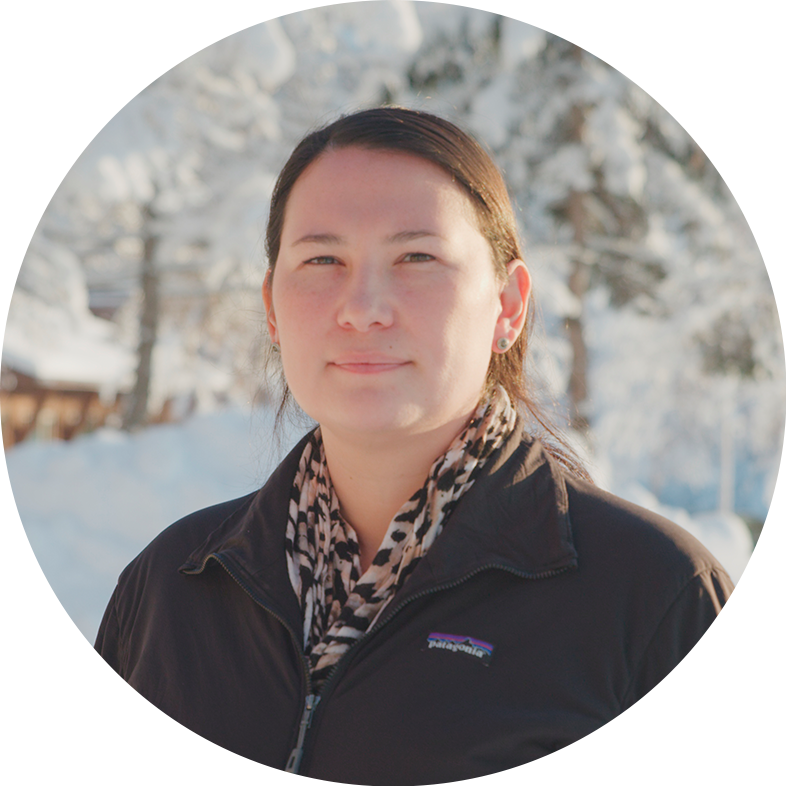
“None of us have had to say where our expertise comes from … everyone understands that we are standing on thousands and thousands of years of cultural knowledge about one specific place on this planet and that is so deep. The mutual respect and understanding is already there so you just get to the deeper topics right away. Our approach is very holistic. We can talk about anything from language revitalization, to building an economy, to food security.”
Apapi, AlexAnna, was raised in the Village of Igiugig. A granddaughter of John and Mary Olympic and the second oldest child of Dan and Julia Salmon. In 2008, she graduated from Dartmouth College with a dual Bachelor of Arts degree in Native American Studies and Anthropology. After graduating, she returned to work for the Igiugig Tribal Village Council as President and Program Director. She also serves as a member of the Igiugig Native Corporation board, as well as the Lake and Peninsula Borough Planning Commission, and the subregional health board. She is enrolled in the Department of Alaska Native Studies and Rural Development Master of Arts program at the University of Alaska, Fairbanks.
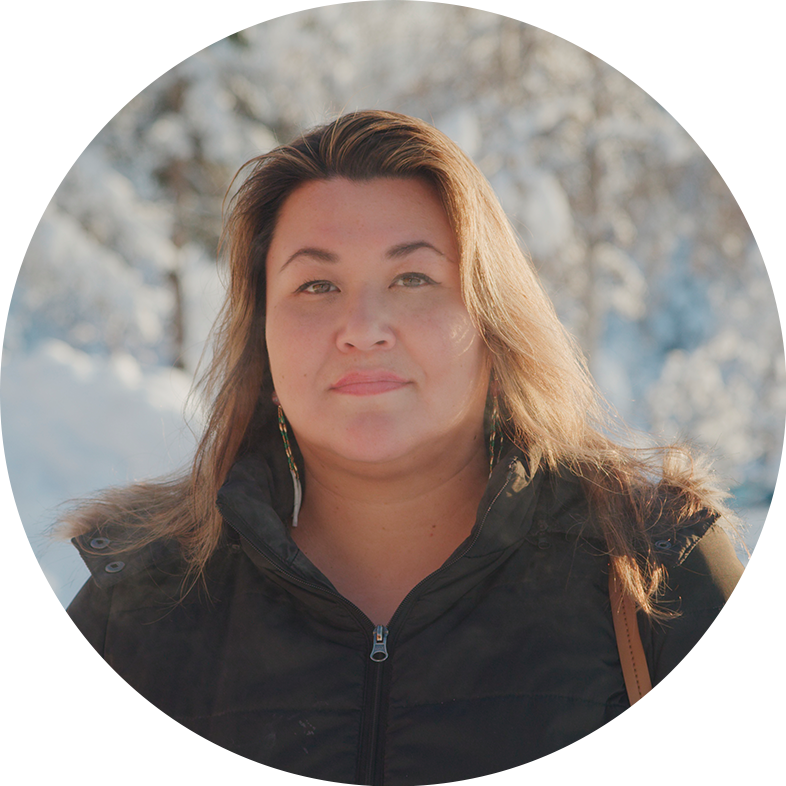
“Building on top of our Indigenous Knowledge, uplifting that and moving toward sustainable practices and deciding what is good for our land, and what is good for our people, and how can we all do this together … We’re a part of something that is so much bigger than ourselves. We are all creating what this is now so it’s hard to say where this is going to take us but we sure know it’s going to be amazing because it comes from a place of love, and our values, and community, and homelands, and traditions.”
Geh Gii Ch’adzaa, Rochelle, is from the Interior Alaskan villages of Beaver and Fort Yukon. Her parents are Angela Peter-Mayo of Fort Yukon and the late Cliff “Tuffy” Adams Jr. of Beaver. Her maternal grandparents are Susan (Lord) and Johnny Peter Sr. Her paternal grandparents are Hannah “Babe” (VanHatten) and Cliff Adams Sr. She was raised living a traditional Athabascan lifestyle with her family following the seasonal cycles of hunting, fishing and trapping off of the Yukon River. These are the values and connections that guide her today and she proudly represents this in all parts of her life and work. She is the mother of three teens, which she is raising with these same values of connectedness, love and respect. Through her many roles and actions, Rochelle has continuously sought to bring her perspective as an Indigenous woman with cultural knowledge, born of the lands and waters, training from the elders with a vision of the future generations to empower Native people everywhere. “It’s important that we as Indigenous people are able to shape the world that we live in to ensure the well being of our people on our own traditional homelands and in our own languages.
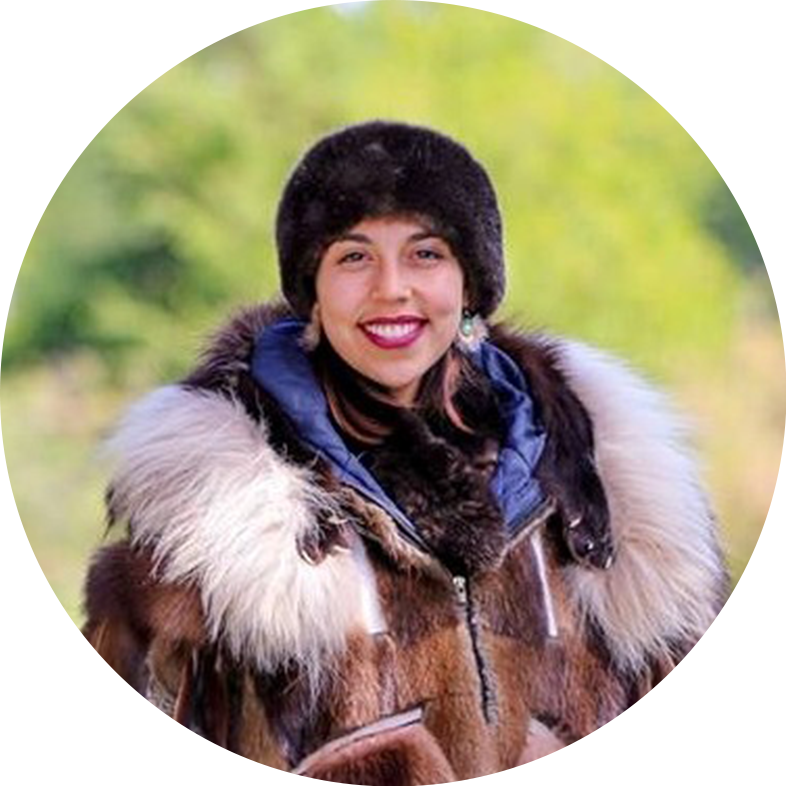
“When we think about a sustainable future, it is about returning to and a reclamation of our values, rather than just a pivot away from them. It is more coming home to our ideas and beliefs that we know are so sacred and inherent to who we are.”
Iñuraaq, Kaylene, is Iñupiaq from Sitñasuak (Nome), Alaska. She is the daughter of Bobby Evans of Sitñasuak and Kathleen Jaycox of Katyaak and the granddaughter to the late Laura (Sockpick) Evans of Kiġiktaq, Bob Evans of Minnesota, and the late Myrtle Wells of Katyaak. Upon receiving her master of arts in Indigenous Politics from the University of Hawaiʻi, Mānoa, she returned to Alaska to strengthen her connection to her community, nuna, and traditions. Iñuraaq is a poet, retracing Iñupiat creative traditions. She is passionate about individual and collective healing through the rejection of colonial ideologies and lifestyles, and a return to Indigenous languages, homelands, and values.
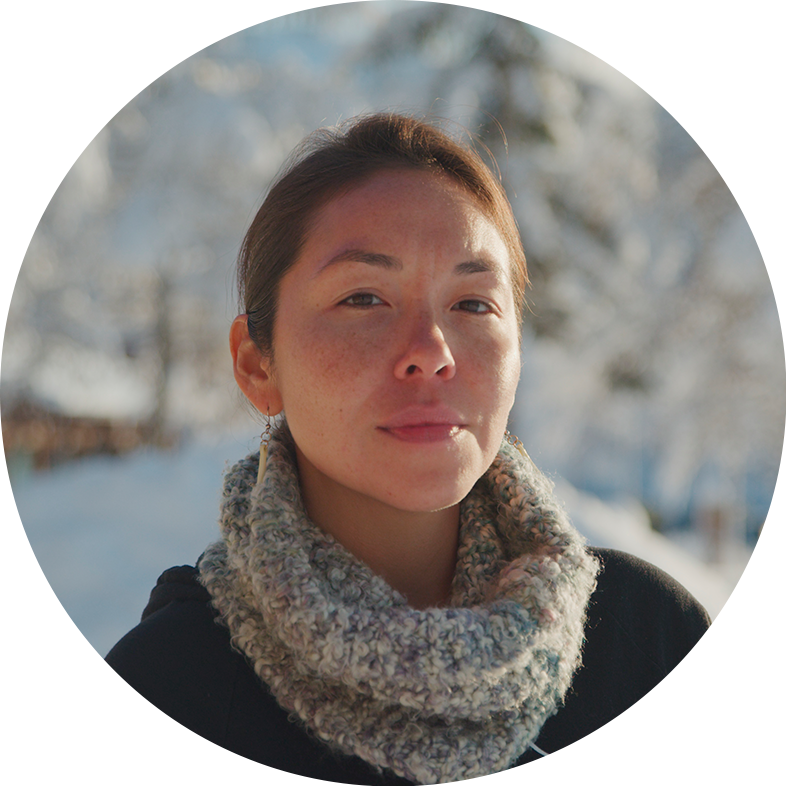
“We can mentor the rest of the world as they try to come up with solutions and come up with a model. We have the model. We have the knowledge of what it means to be in relationship to land and place. We lived in balance and so as the the rest of the world desperately looks for hope and sustainable living, transitions, we as Native people can help unlock that and help articulate and show the rest of the world what we can come back to.”
Akall’eq, Andrea, is a community activist from Bethel, Alaska now living and working on the lands of Kānaka ‘ōiwi (Native Hawaiians). She is a Yup’ik Tribal citizen of the Native Village of Kwinhagak. Andrea serves as the President of Native Peoples Action and as a co-founder of Native Peoples Action Community Fund where her role is to advance Indigenous ways of being and knowing in the Just Transition movement. She is Company Owner of With Real People, a consulting and production based firm in Alaska and Hawaii. She is also Global Director of the Conservation in Partnership with Indigenous Peoples and Local Communities program at The Nature Conservancy. Andrea has a bachelor’s degree in government/political science from Georgetown University and spent several years working for Alaskans in Congress on Capitol Hill.